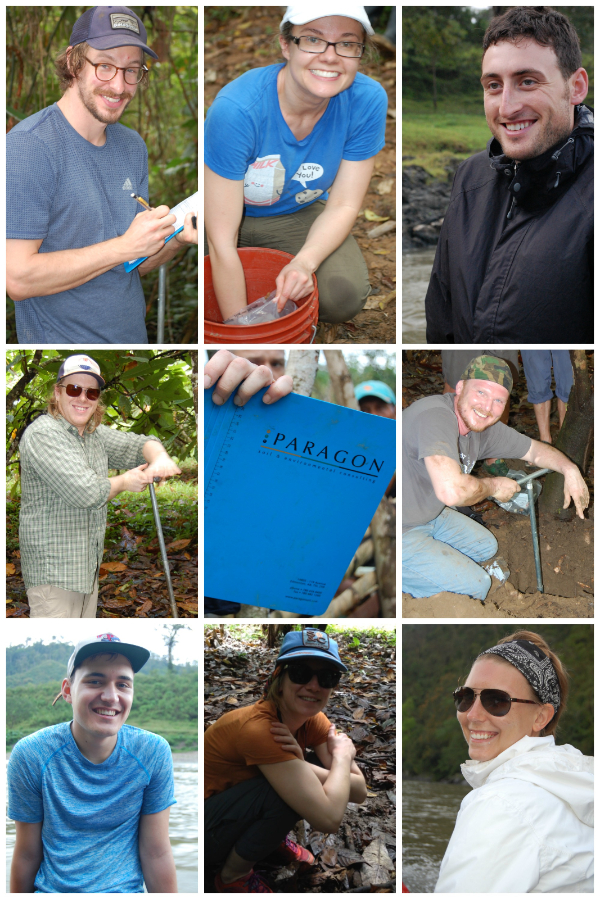Bosawas, Below the Surface
March 13, 2015 by
While it was not the first journey down the Rio Coco for Change for Children staff, the unique perspective of Paragon brigade participants experiencing the reserve for the first time offered a fresh new outlook. Without them, we may not have noticed the soil horizons in the river banks, been able to identify plants by common name and genus, or been aware of our coordinates with gps accuracy at any given point along the way!
Upon arrival in San Andreas, the Paragon team did more than simply scratch the surface of the surrounding land. They walked it. They explored it. They augured it. They dug holes in it. They held it in their hands. They got to know it!
The team was undeterred by challenging conditions not normally seen in March, a month which typically sees a fraction of the amount of rain that fell during our stay. Through rain and wind and weather, the group covered much territory armed with augers and shovels and buckets and bags. From the flood plain to high ground, from cacao plantations to rice fields, from vegetable gardens to unproductive plots, no soil type, condition, or land use was left unaccounted for.
To the untrained eye, the one hundred pounds of soil samples that make the nine-hour boat journey with us out of the Bosawas may appear to simply be soil in fifty shades of brown with some greys, reds, and even a purple (which, I note, elicits much excitement!) tossed in for good measure, but each sample will have a story to tell.
Over and above the on-site soil classification and field notes completed, soil testing at the lab in Managua will test for soil salinity, soil nutrients, and metals and will reveal soil fertility. Results will inform the next steps in identifying agriculture project opportunities and potential soil infertility mitigation strategies in the Bosawas.
Huge thanks goes to Paragon Soils for getting their hands dirty in the first stages of this process!

Blog Climate Change Employee Tour Food Sovereignty In The Field Indigenous Peoples Nicole Farn Overseas Volunteers Travel Stories

